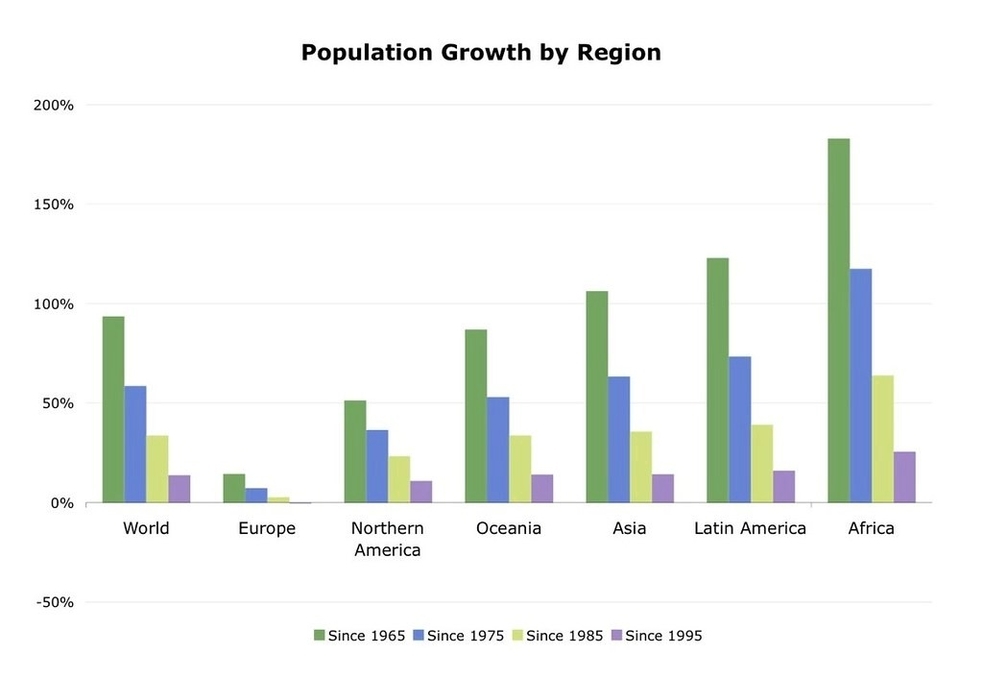
World population growth rate is the measure of how fast the number of people in the world is increasing. It is usually expressed as a percentage or a ratio of births and deaths per year.
According to the [World Population Clock](^2^), the world population is growing at a rate of around 0.91% per year in 2024, which means that there are about 74 million more people each year. This is lower than the peak growth rate of 2.3% per year in 1963, and it is expected to decline further in the future.
The main factors that affect the world population growth rate are fertility, mortality, and migration. Fertility is the average number of children that a woman has in her lifetime. Mortality is the number of deaths per year. Migration is the movement of people from one country or region to another.
Fertility rates have been declining globally due to various reasons, such as improved education, health care, family planning, and women’s empowerment. The global average fertility rate was 2.4 children per woman in 2020, down from 4.9 in 1950. However, there are still large differences between regions and countries, with some having very high fertility rates (such as Niger with 6.9) and some having very low ones (such as South Korea with 1.1).
Mortality rates have also been declining globally due to advances in medicine, sanitation, nutrition, and public health. The global average life expectancy at birth was 72.6 years in 2020, up from 46.5 in 1950. However, there are still large gaps between regions and countries, with some having very high mortality rates (such as Sierra Leone with 18.4 deaths per 1,000 people) and some having very low ones (such as Japan with 3.3).
Migration is a complex phenomenon that involves various economic, social, political, and environmental factors. Some people migrate voluntarily for better opportunities, education, or quality of life, while others are forced to migrate due to conflict, violence, persecution, or natural disasters. Migration can affect the population growth rate of both the origin and destination countries, depending on the number, age, and gender of the migrants.
The United Nations Population Division (UNPD) produces projections of the future world population based on different assumptions about fertility, mortality, and migration. The latest projections from the UNPD (chart #1) show that the world population could reach 9.7 billion by 2050 and 10.9 billion by 2100 under the medium-variant scenario, which
